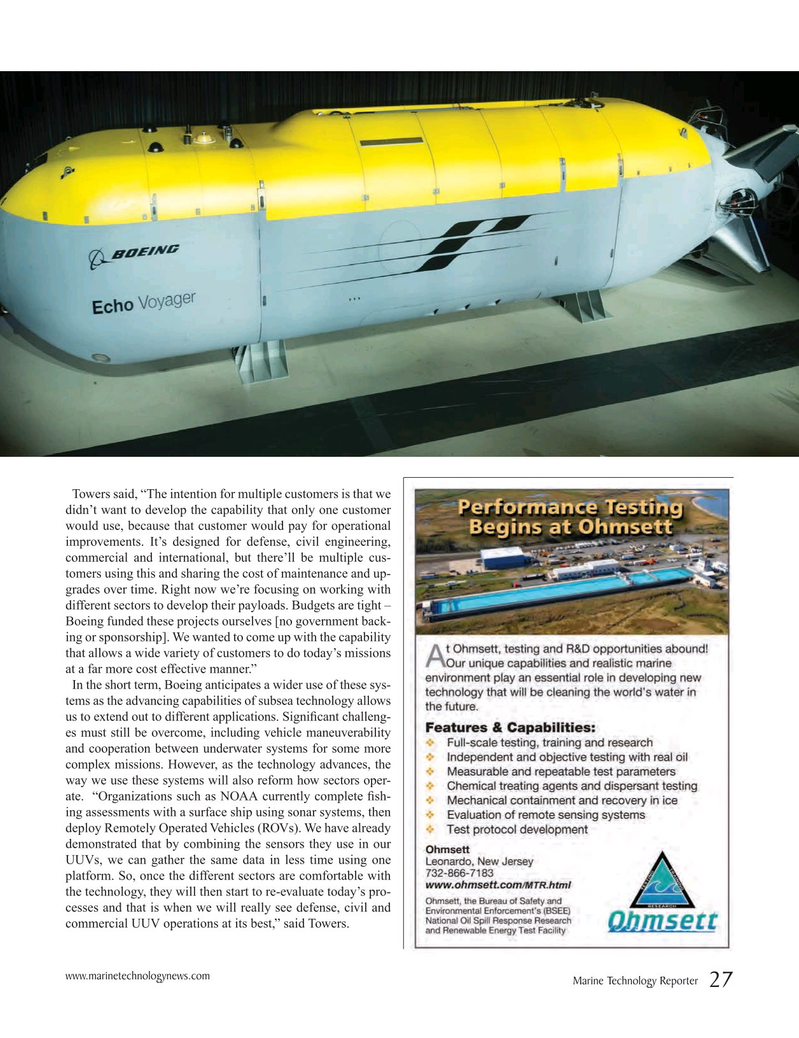
Page 27: of Marine Technology Magazine (May 2016)
Underwater Defense
Read this page in Pdf, Flash or Html5 edition of May 2016 Marine Technology Magazine
Towers said, “The intention for multiple customers is that we didn’t want to develop the capability that only one customer would use, because that customer would pay for operational improvements. It’s designed for defense, civil engineering, commercial and international, but there’ll be multiple cus- tomers using this and sharing the cost of maintenance and up- grades over time. Right now we’re focusing on working with different sectors to develop their payloads. Budgets are tight –
Boeing funded these projects ourselves [no government back- ing or sponsorship]. We wanted to come up with the capability that allows a wide variety of customers to do today’s missions at a far more cost effective manner.”
In the short term, Boeing anticipates a wider use of these sys- tems as the advancing capabilities of subsea technology allows us to extend out to different applications. Signi? cant challeng- es must still be overcome, including vehicle maneuverability and cooperation between underwater systems for some more complex missions. However, as the technology advances, the way we use these systems will also reform how sectors oper- ate. “Organizations such as NOAA currently complete ? sh- ing assessments with a surface ship using sonar systems, then deploy Remotely Operated Vehicles (ROVs). We have already demonstrated that by combining the sensors they use in our
UUVs, we can gather the same data in less time using one platform. So, once the different sectors are comfortable with the technology, they will then start to re-evaluate today’s pro- cesses and that is when we will really see defense, civil and commercial UUV operations at its best,” said Towers.
www.marinetechnologynews.com
Marine Technology Reporter 27
MTR #4 (18-33).indd 27 4/25/2016 10:35:35 AM

 26
26

 28
28
